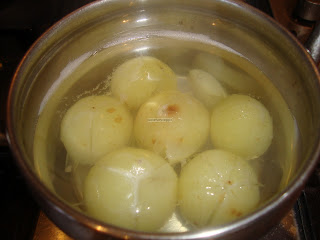Vegetable Kolhapuri
I like to eat a variety of gravies with rotis or even rice and prefer not to make just the usual stuff. I do manage to look at Tarla Dalal’s website every now and then and keep bookmarking recipes. Sometimes I wish to try some of them in the next available opportunity and this recipe was one such. My husband prefers gravies to semi dry or dry sabjis so I made it a bit more watery than she had suggested. I also reduced the coconut quantity a wee bit just to keep the overall fat on check. It is suppose to be a Maharashtrian dish and is mentioned as quite authentic. We had this with rotis and it did taste very good. I did not have kashmiri red chillies but used regular dry red chillies so it was not bright red. The sweetness from the coconut imparts a beautiful flavour to the gravy. I had some paneer frozen and waiting to be used and added it as well, needless to say, it was great. You could skip the paneer and add other vegetables if you like. Here is the recipe…
2 cups boiled vegetables (I used peas, carrot, cauliflower)
1 onion, finely chopped
2 tomatoes, finely chopped
1 teaspoon garam masala
Some chopped coriander leaves
Cooking oil
Turmeric powder
Salt to taste
To grind to paste (grind dry first then slowly add water as required else poppy seeds will not grind):
2 cloves garlic
Small piece of ginger
4 dry red chillies
4 teaspoon dessicated coconut
1 tablespoon sesame seeds
1 tablespoon poppy seeds
Little water
Heat some oil and add the onions, fry until it just begins to brown
Add tomatoes, turmeric powder and the ground paste, cook until raw smell goes away, add little water as and when needed to avoid burning
Add the boiled vegetables, a glass of water and simmer, add coriander leaves, garam masala, salt and simmer until desired consistency achieved. It does thicken once cooled so you may want to add more water
Serve!



















































